
Spatial Chef.
A Spatial Transforming VR Game with Full Body InteractionFunded by.
Ministry of Culture, Sports and Tourism / Korea Creative Content Agency
Presented at.
-
ACM CHI
Student Game Competition, 2023
- HCI@KAIST Pre-CHI Workshop, 2023
- KAIST Game Design Project, 2022
DOI︎︎︎ PAPER︎︎︎ PRESENTATION︎︎︎
Timeline
Oct 2022 - Jan 2023 (4 months)Team Project
- Yeeun Shin - interaction designer/researcher
- Yewon Lee, Soomin Park - developer
- Sungbaek Kim - art/sound director
Deliverables
- Innovative Interface VR Game
- Spatial Gesture Design
- CHI student competition presentation
Tools
Unity VR(C#). Oculus Quest 2.XR interaction toolkit. Figma.
User Study: Bodystorming. Wizard of OZ. Interview. Quantitative evaluation
What if we could play with space?
We present Spatial Chef, a VR game that focuses on interacting with space itself,
shifting away from the conventional object interaction of virtual reality (VR) games.
This allows players to generate and transform the virtual environment around them directly.
This attempt turn the VE, typically treated as a passive backdrop, into an attractive medium that responds to the player's intentions.
shifting away from the conventional object interaction of virtual reality (VR) games.
This allows players to generate and transform the virtual environment around them directly.
This attempt turn the VE, typically treated as a passive backdrop, into an attractive medium that responds to the player's intentions.
My Role Lead Game Design / User Study / Project Management (First Author)
As the sole Interaction Designer on the team,
I played a key role in designing the game's system and interactions. Additionally, I implemented certain gestural inputs by utilizing vector calculations with Unity and the XR Interaction SDK.
I played a key role in designing the game's system and interactions. Additionally, I implemented certain gestural inputs by utilizing vector calculations with Unity and the XR Interaction SDK.
As HCI/UX Researcher,
I spearheaded user studies, encompassing formative studies, playtests, and final evaluations throughout the process. As the primary author, I was responsible for the overall user study analysis and paper writing.
I spearheaded user studies, encompassing formative studies, playtests, and final evaluations throughout the process. As the primary author, I was responsible for the overall user study analysis and paper writing.


ABSTRACT
How can we play with space? We present Spatial Chef, a spatial cooking game that focuses on interacting with space itself, shifting away from the conventional object interaction of virtual reality (VR) games. This allows players to generate and transform the virtual environment (VE) around them directly. To capture the ambiguity of space, we created a game interface with full-body movement based on the player’s perception of spatial interaction. This was evaluated as easy and intuitive, providing clues for the spatial interaction design. Our user study reveals that manipulating virtual space can lead to unique experiences: Being both a player and an absolute and Experiencing realized fantasy. This suggests the potential of interacting with space as an engaging gameplay mechanic. Spatial Chef proposes turning the VE, typically treated as a passive backdrop, into an active medium that responds to the player’s intentions, creating a fun and novel experience.
Motivation
WHAT IF WE COULD
PLAY WITH SPACE ITSELF?
VR games traditionally emphasize object control, relegating space to a backdrop and neglecting spatial interactions. Imagine fully engaging with the entire virtual environment, Space itself!
Research - Related Work

Non-VR games
Challenging to provide an active spatial experience since the screen essentially blocks the player from the game space.
Challenging to provide an active spatial experience since the screen essentially blocks the player from the game space.
HCI research
Interacting with space itself has received little attention or remained passive, except for using space incidentally to interact with objects.
Interacting with space itself has received little attention or remained passive, except for using space incidentally to interact with objects.
Approach
We prioritize spatial interaction as a core game mechanism that reflects player intention, encouraging an immersive and novel experience.
We prioritize spatial interaction as a core game mechanism that reflects player intention, encouraging an immersive and novel experience.
Concept Design

Initial Sketch & Prototype
Sketched VR UI on panorama grid



Defined Interaction Elements based on dimension + Figma Prototype

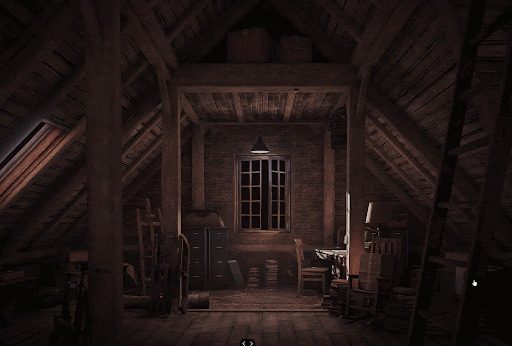
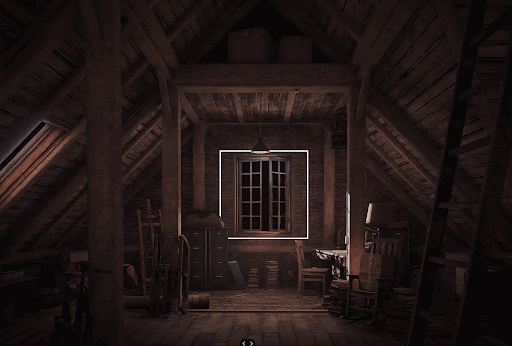

︎︎︎
︎CHALLENGES. Interaction Accessibility︎
Interacting with VR environments can be ambiguous and challenging. Our goal was to develop intuitive gestures, allowing users to focus on the game rather than learning complex interactions.
To achieve this, we gained insights by observing people's instinctive gestures across the three Figma prototypes.
︎︎︎
Formative Study


Interaction Design
Interaction Design
Based on these player perceptions of distant and near spatial transformations,
I designed gestures and rules for spatial interaction of the game.
![]()
![]()
I designed gestures and rules for spatial interaction of the game.


Game Phase Design
Our game is designed to seamlessly shift the player's focus from objects to space. It's played in three phases to inspire and provide enjoyment in interacting with the game space.
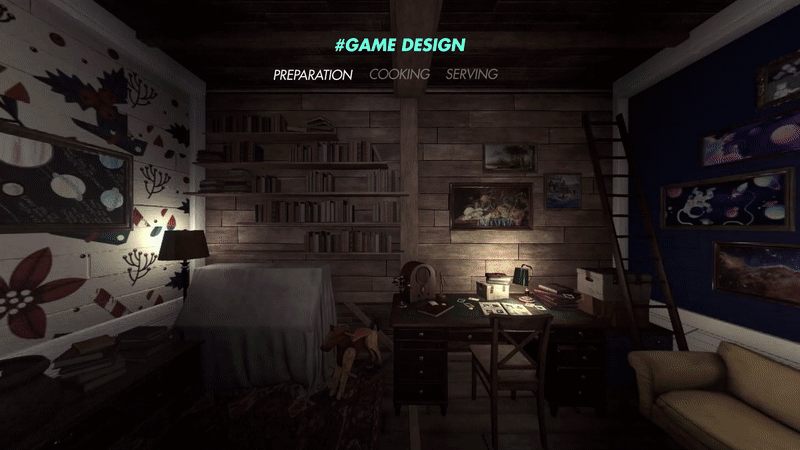

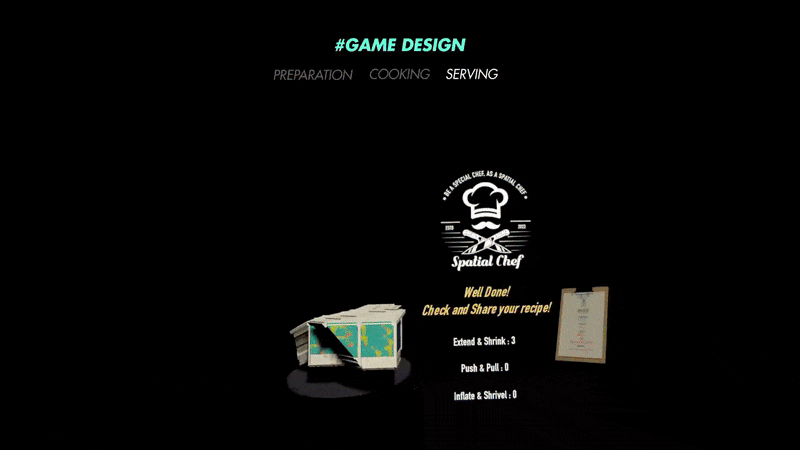
Implementation
We devised techniques to maintain the structural and visual coherence of the space as the player transforms it in order to preserve the experience of manipulating a space within a space. Used Oculus Quest 2 and Unity XR toolkits for implementation.


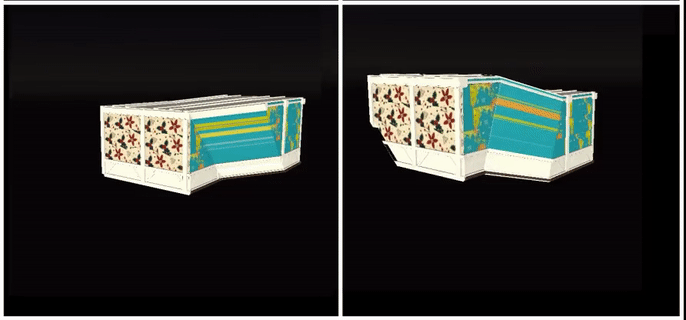
Evaluation - User Study

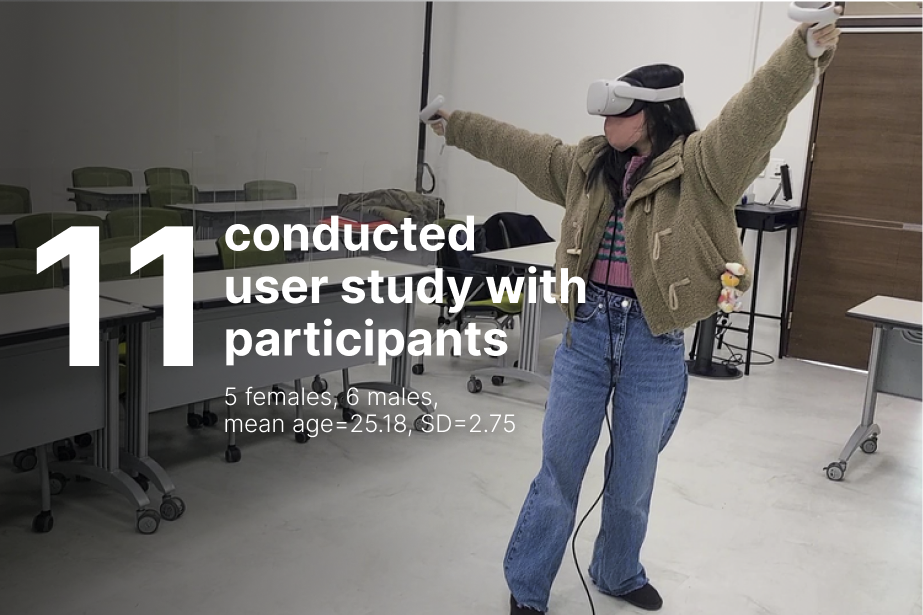
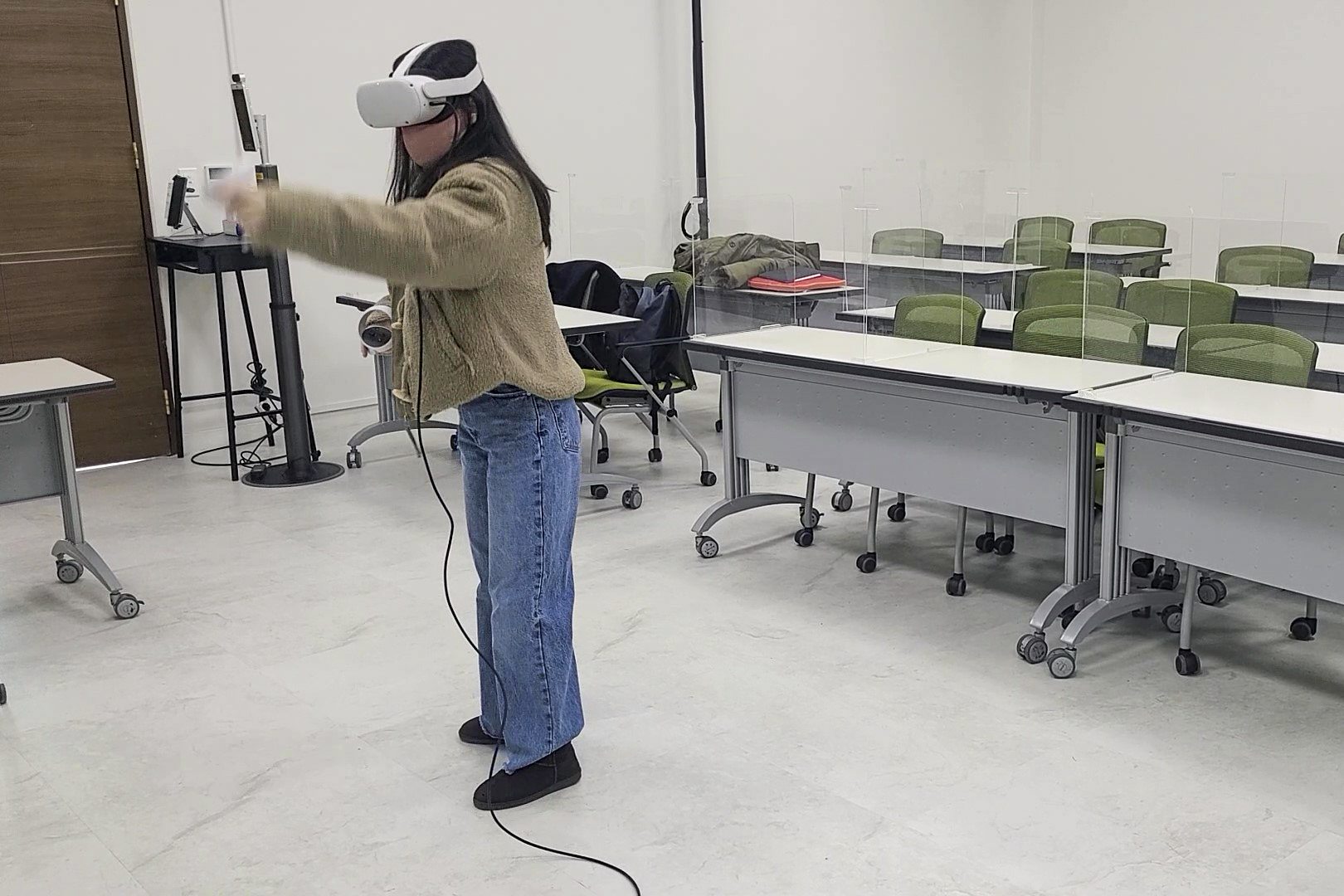
Slater-Usoh-Steed Presence scale
to ensure the VR presence was well implemented
to ensure the VR presence was well implemented
Intrinsic Motivation Inventory (IMI)
to examine the enjoyment of the game using subscales ‘Interest/Enjoyment’
to examine the enjoyment of the game using subscales ‘Interest/Enjoyment’
System Usability Scale (SUS)
to confirm usability as a spatial transformation and generation interface
to confirm usability as a spatial transformation and generation interface
Semi-Structured Interview
designed to investigate what experiences our game evokes in players
designed to investigate what experiences our game evokes in players
Results
︎ Quantitative Evaluation

︎ Qualitative Findings (Interview Thematic Analysis)
Novel and Intuitive Spatial Manipulation.
“Normally, VR games focus on objects, but it was refreshing to interact with the space itself by stretching and contracting it” Although spatial manipulation was an unfamiliar concept, they explained, “It was easy and intuitive in that it was possible to control a space of ambiguous concept through realistic body movements.”
Arm swing was chosen as the most natural manipulation by five participants due to its correspondence with audio-visual feedback from immediate spatial change.
Being Both a Player and an Absolute.
The participants felt a sense of absolute power and presence as players when manipulating the space, which was a unique experience that made them more aware of their surroundings.
"Space is a larger concept than objects. So I had a strong sense of being in the VR space because I was aware of everything around me rather than just the small objects... At the same time, I felt like I had absolute power because I could bend space with my gestures alone."
Realized Fantasy Stimulating Creativity.
Viewing the transformed space during the game, participants reacted as follows. "Look! I'm in Interstellar right now." "It reminds me of Harry Potter. It's fun to see unexpected graphics that seem to be in the real world." Participants presented creative spatial transformation results to suit their tastes, associating fantasy imaginations. In particular, the more the room was transformed, the more abstract the room itself became, encouraging their creativity.




Creative game results to the player's taste
Limitations & Future Work
Since our game only used the Oculus Head-Mounted Display (HMD) and controllers without additional equipment, the game interaction was composed of actions distinguished by head and hand data values. We also used a controller rather than hand tracking to easily track a wide range of hand positions. Future work could expand spatial interaction with more natural and richer body movements by adding hand tracking or full-body capture equipment.
Conclusion
Spatial Chef is designed to break away from traditional object interaction VR games by emphasizing space and allowing active interaction with it.
We found that what the player associates with (physical objects or magic powers) varies depending on the interaction distance in space. The spatial operation based on this was evaluated as intuitive. This implies that manipulating the virtual environment can be ambiguous, but that ambiguity can be effectively managed by designing actions to match player perceptions. Directly imprinting body movements into the VR space could provide players with a fun and unique experience.This introduces a larger canvas, the virtual environment, to the game, opening the door for more diverse and interactive games.
Takeaways


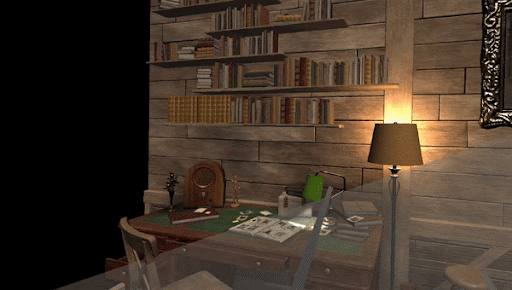
IMPORTANCE OF AUDIO-VISUAL FEEDBACK IN VR
Rich and clear audio-visual feedback is crucial in VR, especially with higher degrees of freedom. Providing clear indications for every interaction can assist players in developing a mental image of the game quickly and enhance their engagement.
START - INTERACTION - END
Through multiple playtests, I learned that a clearly defined interaction itself could motivate users to interact. With this understanding, I tried to design a clear “start” and “end” of the interaction within the game, thereby enticing the player to instinctively engage with it.
JUST DO IT & ITERATE
Instead of striving for perfection in the early game design phase, I learned the importance of an iterative "just do it" approach. Creating and testing interactive loops rapidly and repeatedly is crucial, rather than building the entire game from scratch.
Rich and clear audio-visual feedback is crucial in VR, especially with higher degrees of freedom. Providing clear indications for every interaction can assist players in developing a mental image of the game quickly and enhance their engagement.
START - INTERACTION - END
Through multiple playtests, I learned that a clearly defined interaction itself could motivate users to interact. With this understanding, I tried to design a clear “start” and “end” of the interaction within the game, thereby enticing the player to instinctively engage with it.
JUST DO IT & ITERATE
Instead of striving for perfection in the early game design phase, I learned the importance of an iterative "just do it" approach. Creating and testing interactive loops rapidly and repeatedly is crucial, rather than building the entire game from scratch.
Achievement
Published at the premiere conference in Human Computer Interaction: CHI 2023 Presented in person as Student Game Competition Finalist





